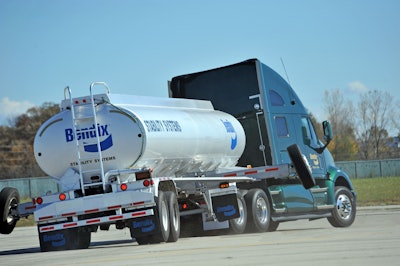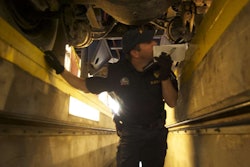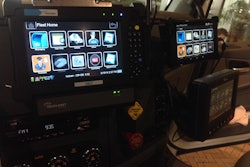 NTSB recommends that FMCSA and NHTSA implement mandates for crash avoidance systems and rollover-prevention systems.
NTSB recommends that FMCSA and NHTSA implement mandates for crash avoidance systems and rollover-prevention systems.The National Transportation Safety Board released its 2015 Most Wanted List of safety regulations this week, and included in list of 10 items are four items related to trucking and truck operators.
Greater oversight
Chief among trucking-related items on the Most Wanted list is NTSB’s request that the Federal Motor Carrier Safety Administration and the National Highway Traffic Safety Administration “improve their oversight of operators, drivers and vehicles,” NTSB says.
Stronger oversight includes, per NTSB, (1) more steps to ensure new entrant carriers address any safety deficiencies and quicker out-of-service placement if deficiencies are not improved, (2) implementation of an electronic logging device mandate and (3) instituting sleep apnea screening requirements.
NTSB’s request for improved oversight also includes requirements that all trucks be equipped with collision warning technology, tire pressure monitoring systems, rollover stability control systems and lane departure warning systems.
More stringent medical requirements
NTSB says truck operators should be subject to more and stricter medical requirements, including procedures to identify risk of sleep disorders. Qualification of medical examiners should be limited to those who have the ability to prescribe medicine and have access to information about conditions that could disqualify patients from operating commercial equipment, NTSB says.
Ban on using phones while driving
NTSB’s second trucking-related item is for drivers of all vehicles, including trucks (and planes): The safety board asks for a nationwide ban on the use of personal electronic devices while driving. Currently, only 14 states and D.C. ban the use of handheld devices while driving.
“Ultimately, a cultural shift will be required, and it must begin with each of us,” NTSB’s report says. “Surveys repeatedly show that we know that PED distraction is dangerous while driving, yet we admit to indulging. It’s time to do what we know is right, and disconnect from deadly distractions.”
Driving under the influence
NTSB recommends for carriers post-accident drug and alcohol testing or drivers, along with drivers themselves discussing with their doctors any impairment effects that prescription medication may cause.
Per NTSB’s report:
“Treatment should not always exclude you from operating a vehicle, but such conditions and medications need to be monitored. If any medication label warns against operating heavy machinery, that includes vehicles. Also, while the danger of drinking and driving is more broadly understood than that of driving under the influence of drugs, many do not know that even low levels of alcohol can degrade skills and increase crash risk.”
The agency also recommends stronger laws against impaired driving, increasing visibility of enforcement and expanded use of technology that locks ignition of engines via passive alcohol sensors.











